- Annapurna Circuit: Part 1, Trekking 101
- Annapurna Circuit: Part 2, Gorge-ous
- Annapurna Circuit: Part 3, High Valley of Manang
- Annapurna Circuit: Part 4, Up & Over
- Annapurna Circuit: Part 5, Kali Gandaki
- Annapurna Circuit: Part 6, Hot Springs and Pink Mountains
- Annapurna Circuit: Should You Hire A Guide
- Annapurna Circuit: How Much Does Trekking the Annapurna Circuit Cost?
Day 4: Tal to Timang – 20 Mar 2010
We awoke to the bells of a donkey train getting an early start.
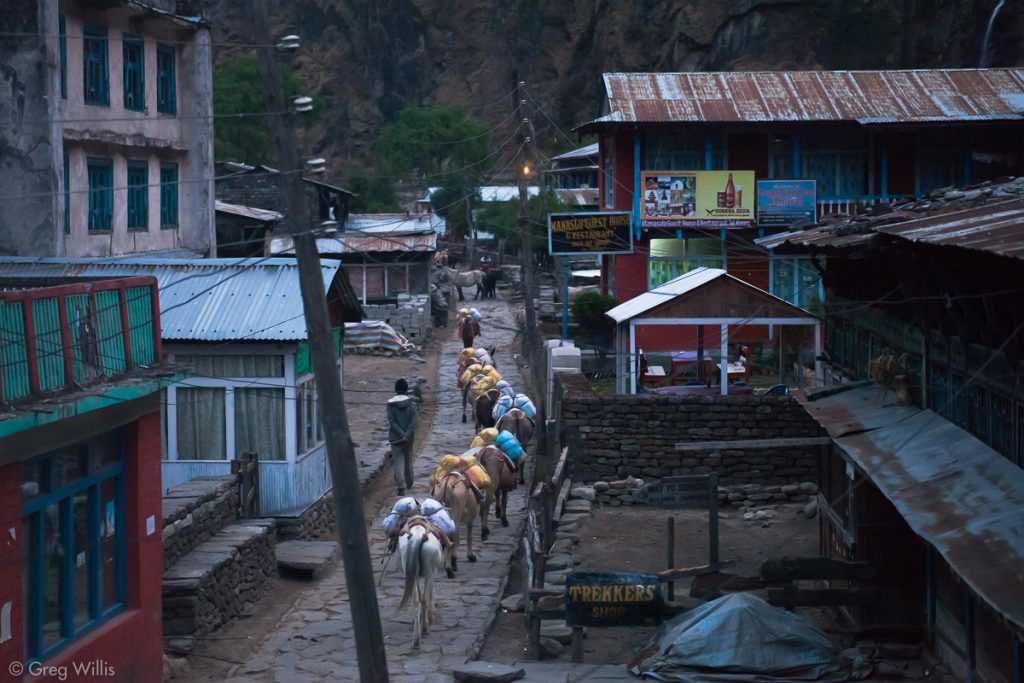
After the wide valley of Tal the the river narrows into a constricted gorge. As we continue upwards as well as onwards, the air takes on a clearer character than on previous days. And we begin to see pines cling to the rock faces.
The narrower valley brought the road construction noise closer and louder. I simply cannot imagine how they will be able to run a road through the cliff here. But just north of the village of Karte, the jackhammers finally faded into the distance. And this became the trek that we had envisioned.
The Marsyandi takes a turn from its northward direction to the northwest before Bagarchap. Bagarchap was the site of a large landslide in 1995 that killed 11 villagers and 9 trekkers. While we waited for lunch, we went uphill in a bit to check out the gompa (monastery). The head monk was not to be found, so we couldn’t go inside, but the prayer wheels and outside ornamentation was worth the effort.
If you’re going to this part of Nepal, I’d like to recommend a book: Himalayan Dialogue by Stan Royal Mumford. It’s primarily a scholarly work, so it can be a bit of a slog to get through. It describes the conflict between the traditional Buddhism of relatively recent Tibetan immigrants of Bagarchap and the pre-Buddhist shamanism of the native Gurungs in Taje, on the opposite side of the valley. In the early 1960s a traditionalist lama came to Bagarchap and forbid its inhabitants from participating in Taje’s “red offering,” a spring sacrifice of a deer. In its stead, he replaced it with a new Tibetan Buddhist fertility rite from a text he composed by himself that keeps with the Buddhist prohibition on killing. It’s easy to think of the people in these small villages as unchanging and obscure. Himalayan Dialogue does a good job of showing the changes and beliefs of the people who you encounter, but who would not easily talk about it.

This part of Nepal seems like nothing but landslide and land awaiting landslides. The steepness of the valley gorge exacerbates the problem. Most of the valley that you can see is not bedrock but just gravel, cobbles, and boulders. Frequently you see the scars from where, after soaking rains, the side just collapses into the valley. The tragic landslide in Bagarchap was far from unusual.
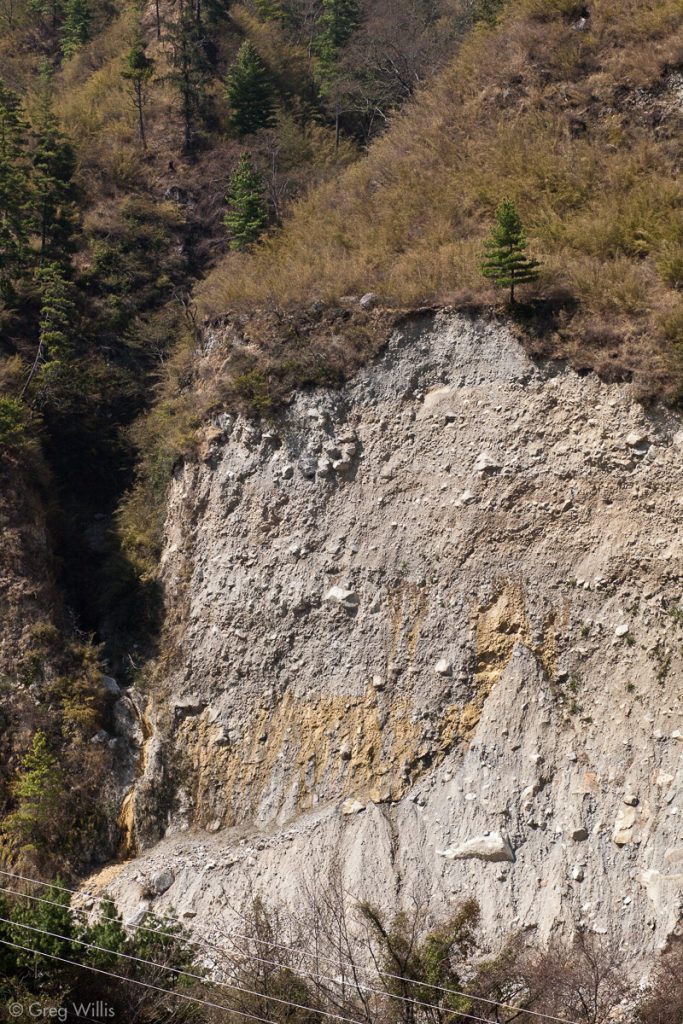
There’s not much to Timang, our destination for the day. It’s small even for AC villages — just a handful of houses. Beautifully situated in the shadow of Lamjung Himal, it has enough elevation to get great views of the peaks of Manislu. The folks in Timang were building a structure, probably another lodge. But the fascinating thing about the construction is that all the materials were local. Men dug up rock from the surrounding land, women carried it to the worksite, then masons dressed the stone and placed it onto the walls.
We stayed in the newly constructed Prasanna Hotel and Lodge, which has a wonderful elevated patio for views and meals.
- Places: Karte – Dharpani – Bagarchap – Danaqu – Timang
- Time walking: 8:00
- Temperature: 61°F-73°F
- Elevation gain: 3,051 ft
- Lodging: Prasanna Hotel and Lodge, Timang
Day 5: Timang to Chame – 21 Mar 2010
The gradual dawning of the day’s first light; the rustic aroma of wood fires starting; or the harsh sound of men spitting — ah, the ways to be woken in Nepal.
By now we were getting into the rhythm of the trek. And the hazy trudge of the lowlands had become the bright blue amble of the higher country. Tal is a bit higher than mile-high Denver, and Timang is at 8,628 ft. Timang had a good vibe. It only had a couple of lodges, with more on the way, so it still retained its small village feel. This along with its extraordinary views set it apart for the usual overnight.
Throughout the hike, the folks in the valley kept bees. It’s a long walk to the store for something sweet, so why not make your own honey. The apiaries were nothing sophisticated, usually just a modified log mounted on the side of a house.

The day was a good one: beautiful pine forest, clear weather, crisp air. In Thanchowk we passed stacks of pine needles, much like the haystacks around Bahundanda. There didn’t look to be any livestock, so I’m guessing that the needles were for adding organic matter for the soil for crops.
And the day was a rare short one: we rolled into Chame around noon. With a whole afternoon to knock about the town, we found that all the shops were closed. Our short day coincided with the death of Nepal’s former five-term prime minister, Girija Prasad Koirala, and the shopkeepers closed their shops out of respect for someone from Nepal’s more stable times.
But Chame is a big town for the AC, so there were things to do & see besides shops. It has all of Tibetan Buddhist accouterment we’d find for the rest of the trek: a kani (entrance gate), prayer wheels, a big prayer wheel, mani walls (stones carved with prayers), chortens (stupa), as well as exquisitely decorated windows.
We wandered about the town enjoying the lack of pressure to arrive at the afternoon’s destination, our well-deserved half-day off.
- Places: Thanchowk – Koto – Chame
- Time walking: 3:00
- Temperature: low of 50°F
- Elevation gain: 260 ft
- Lodging: Hotel Marshyangdi Mandala, Chame

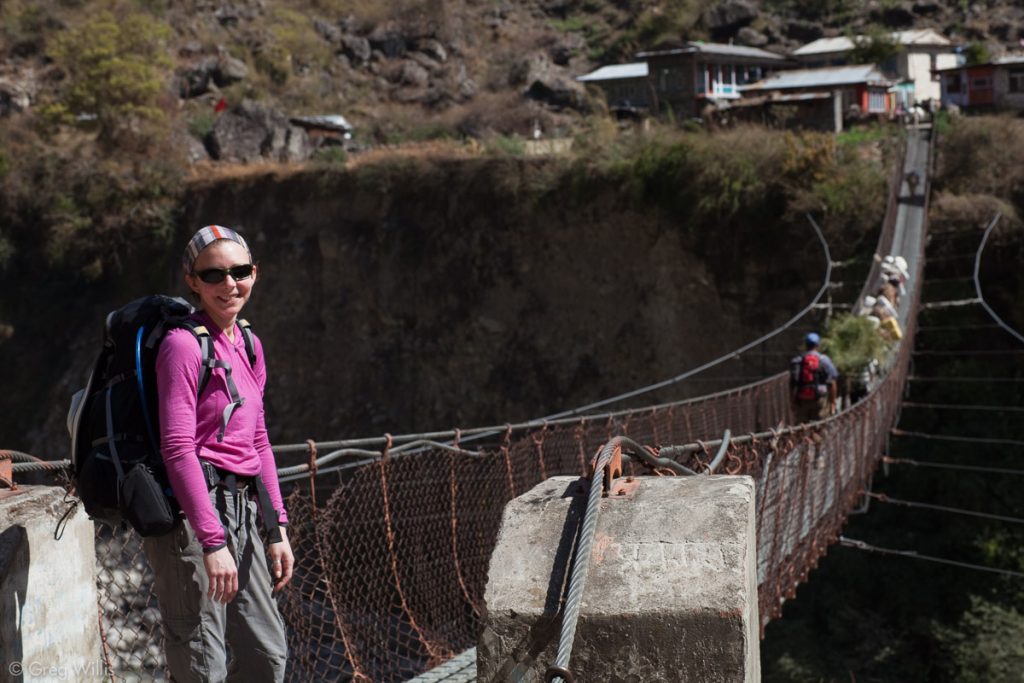
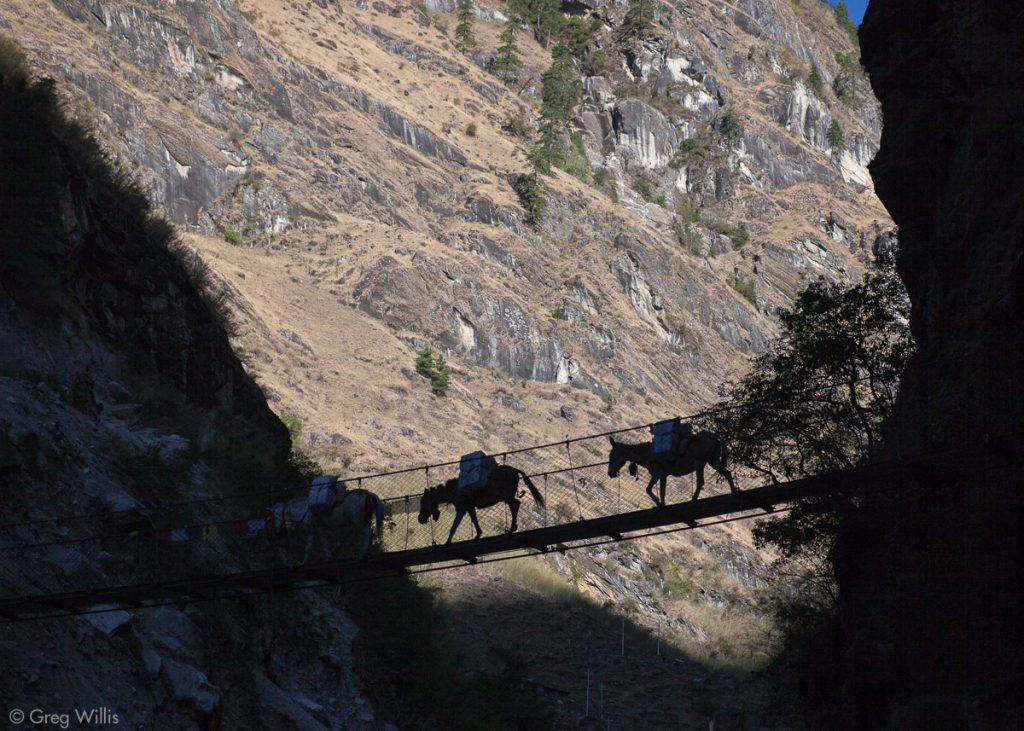
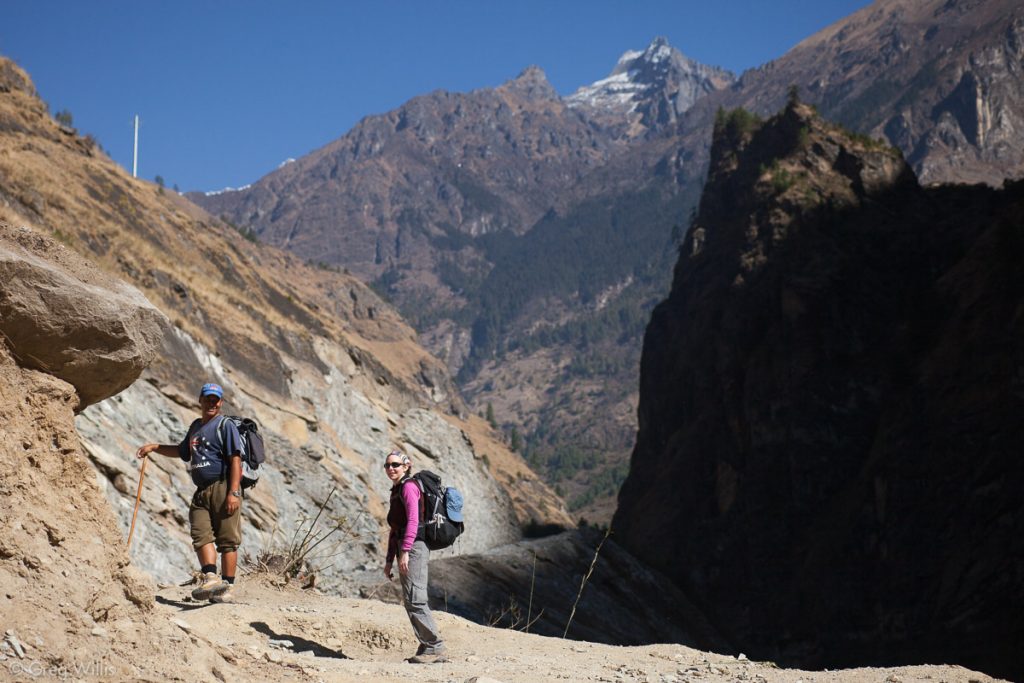
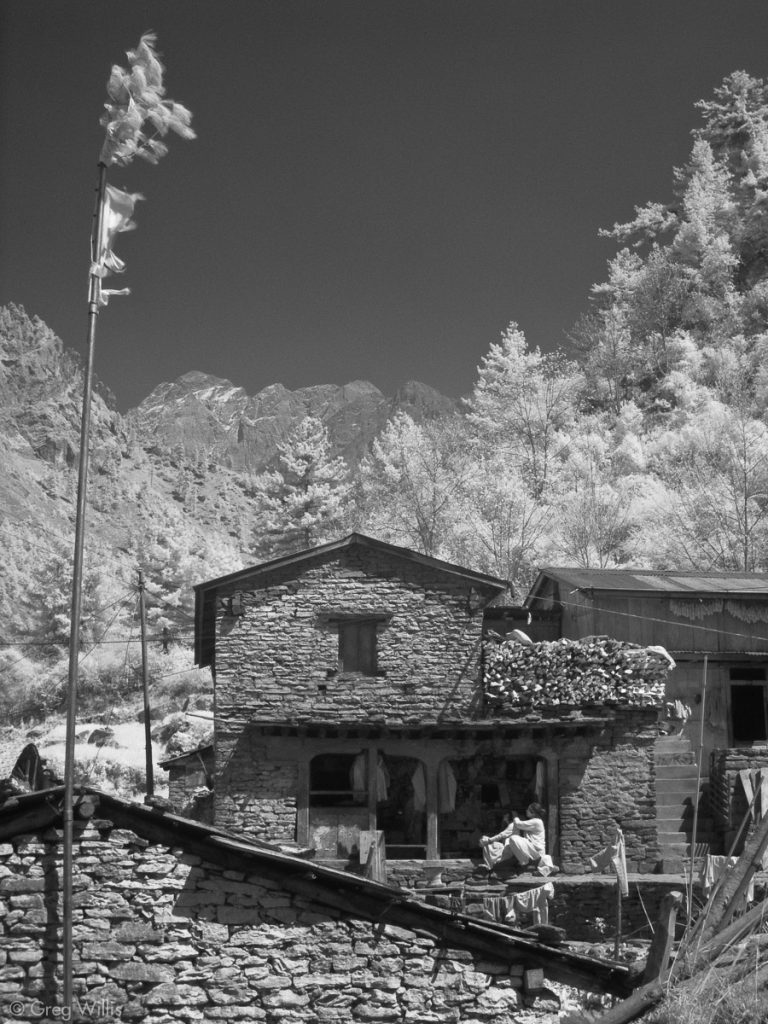


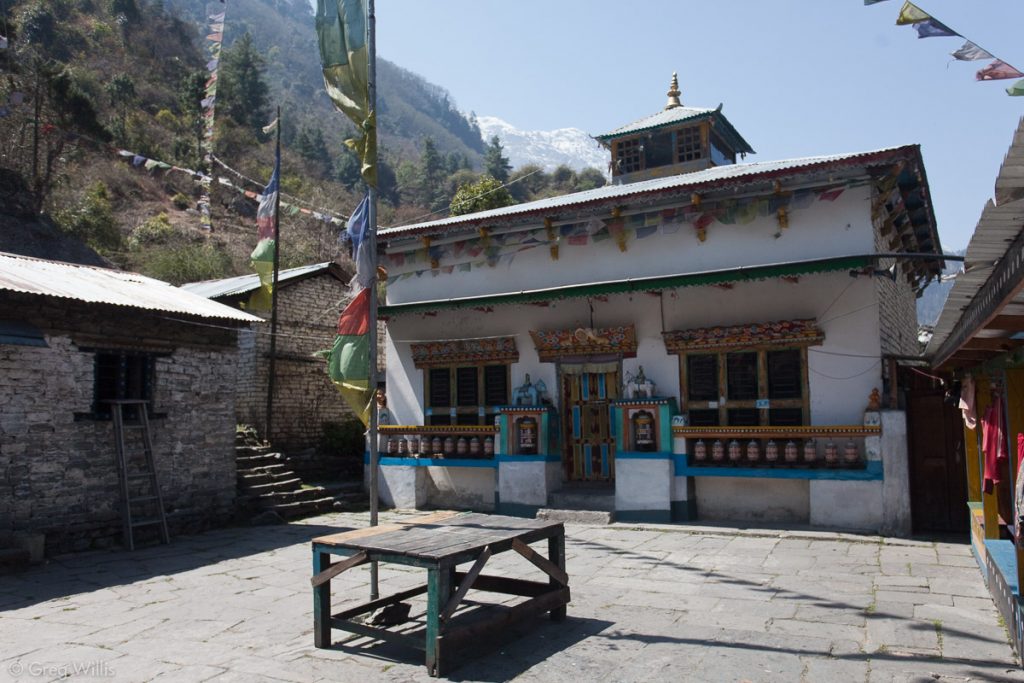
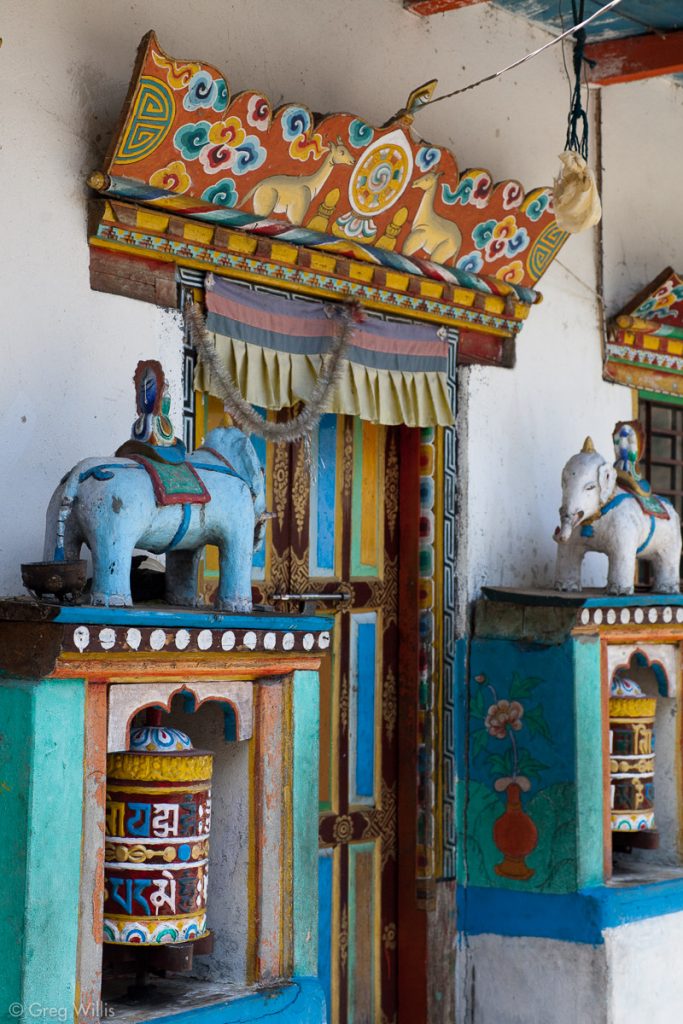

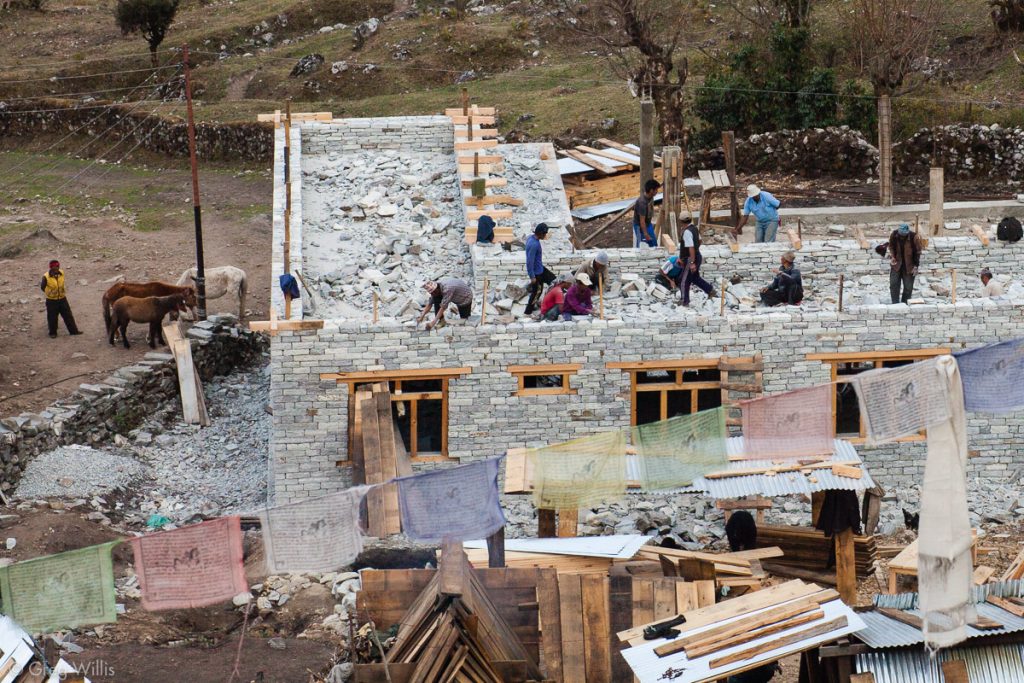

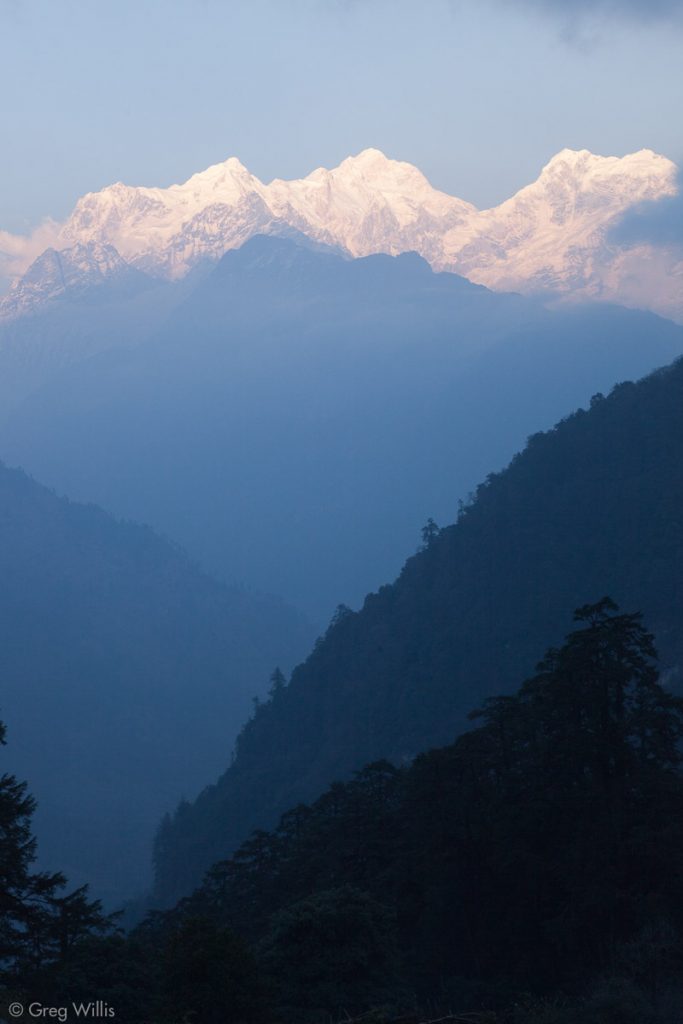
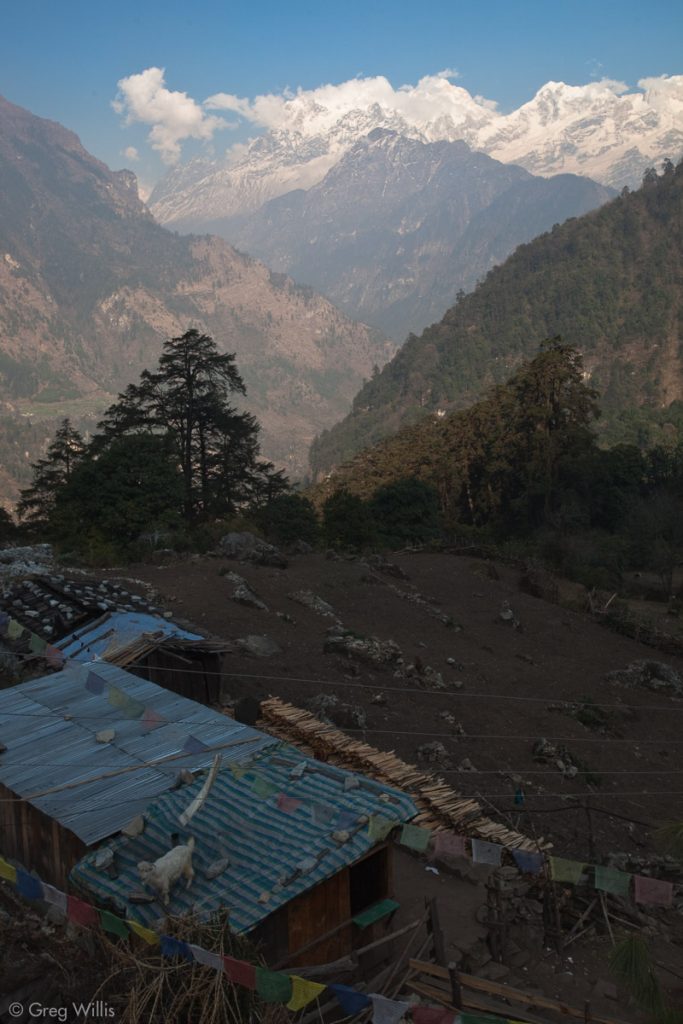

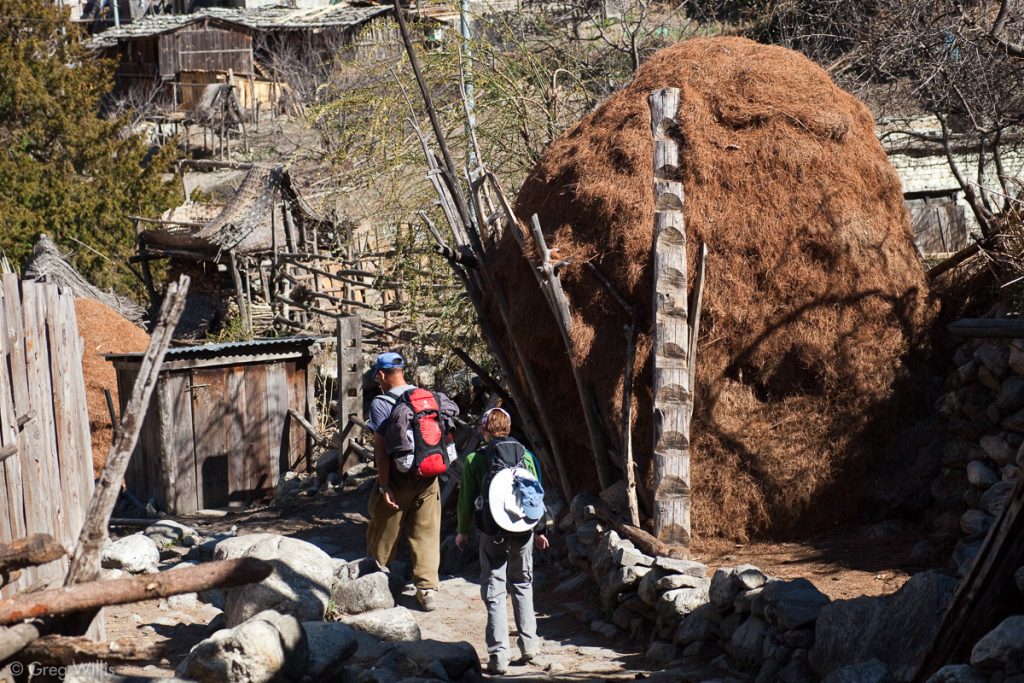

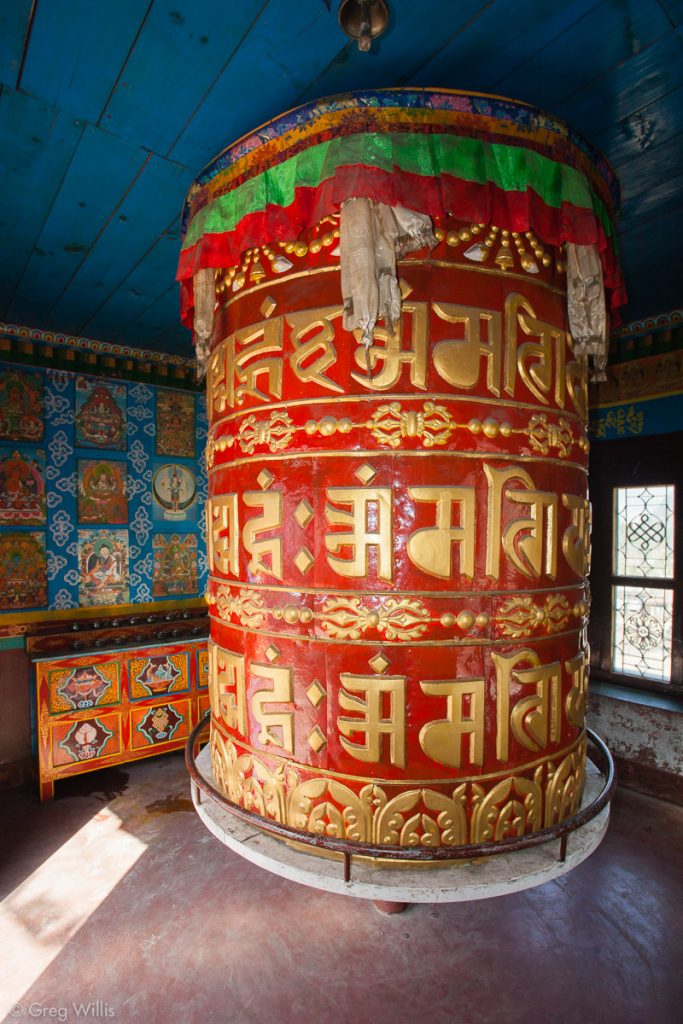




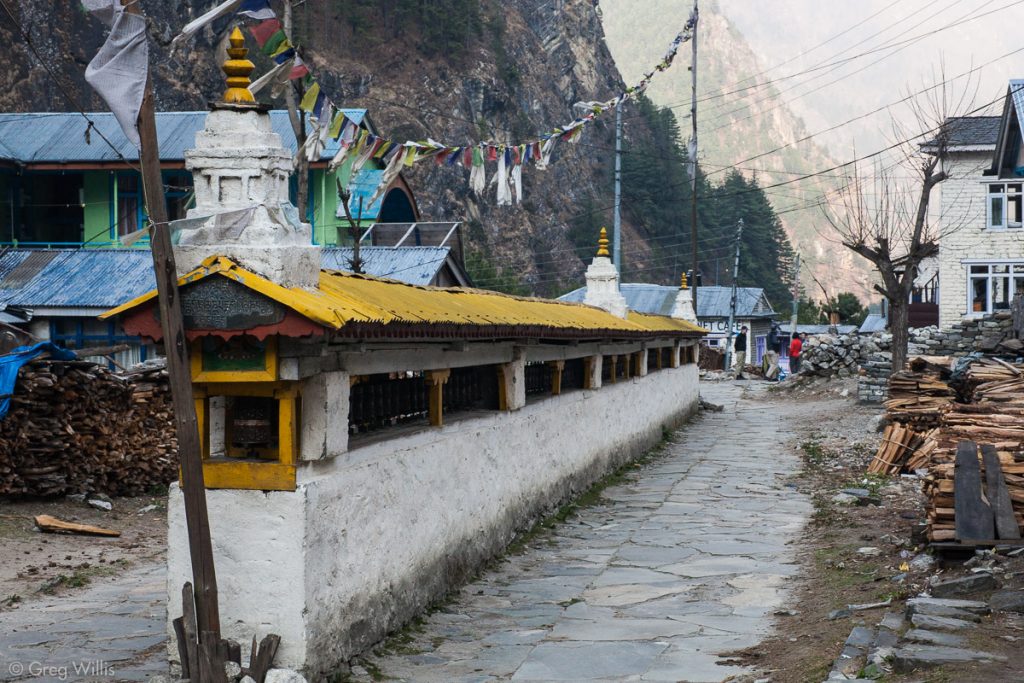
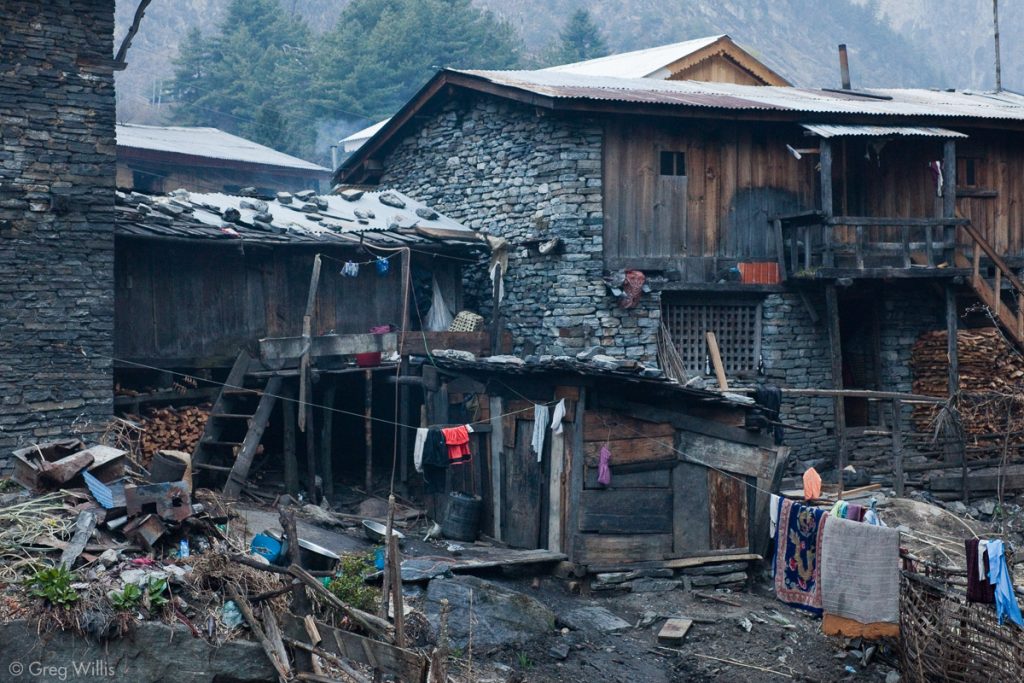
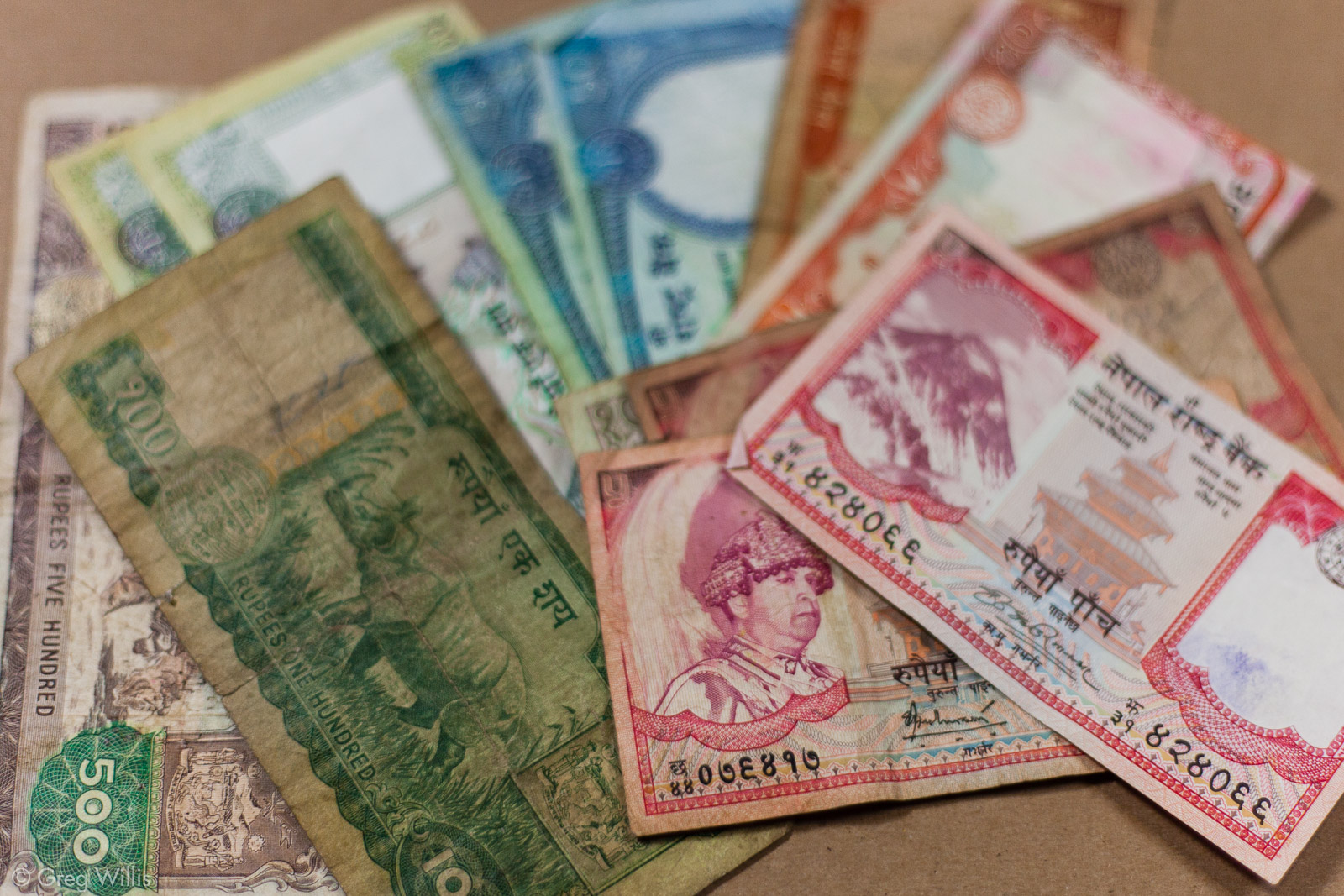
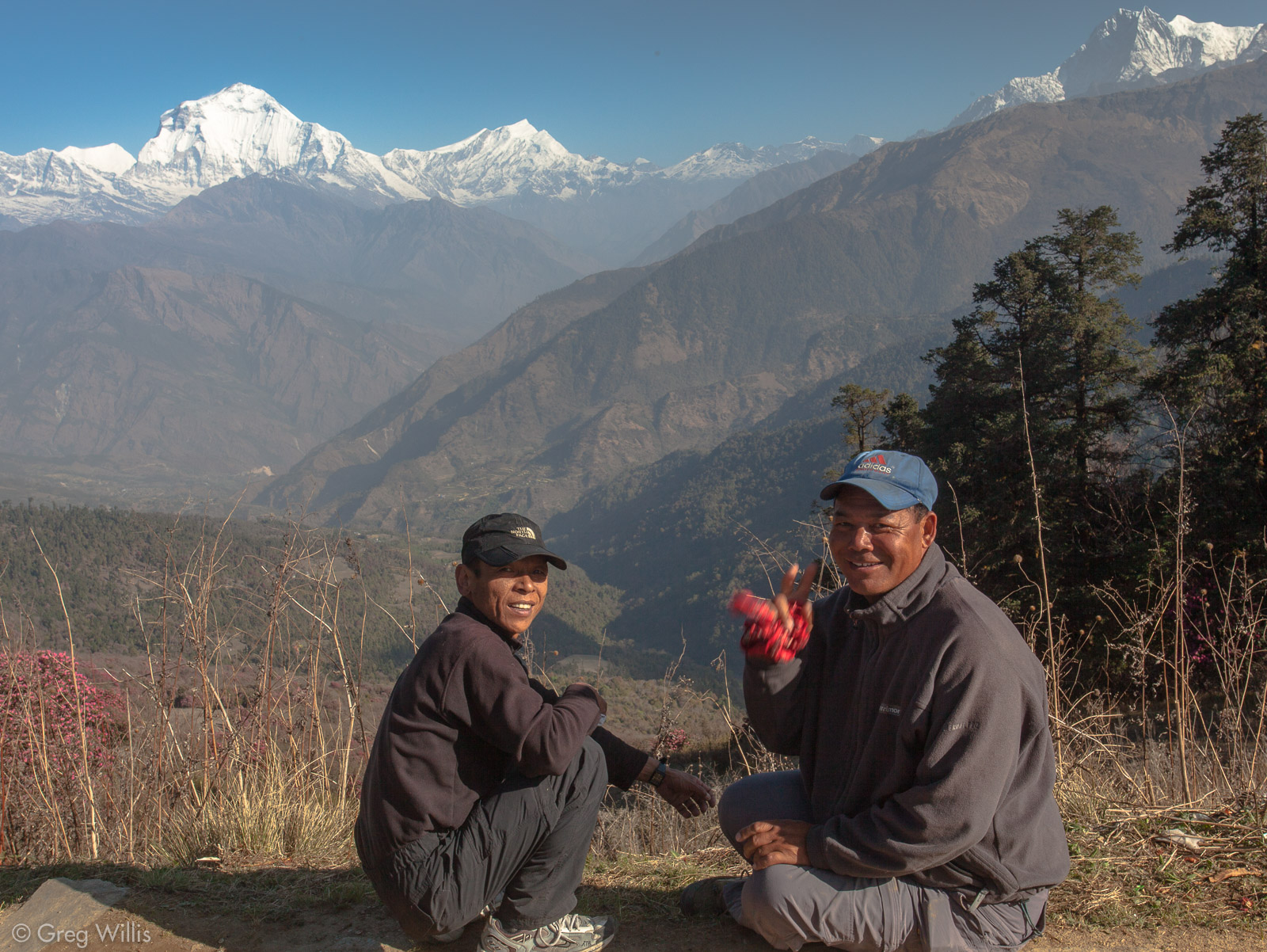
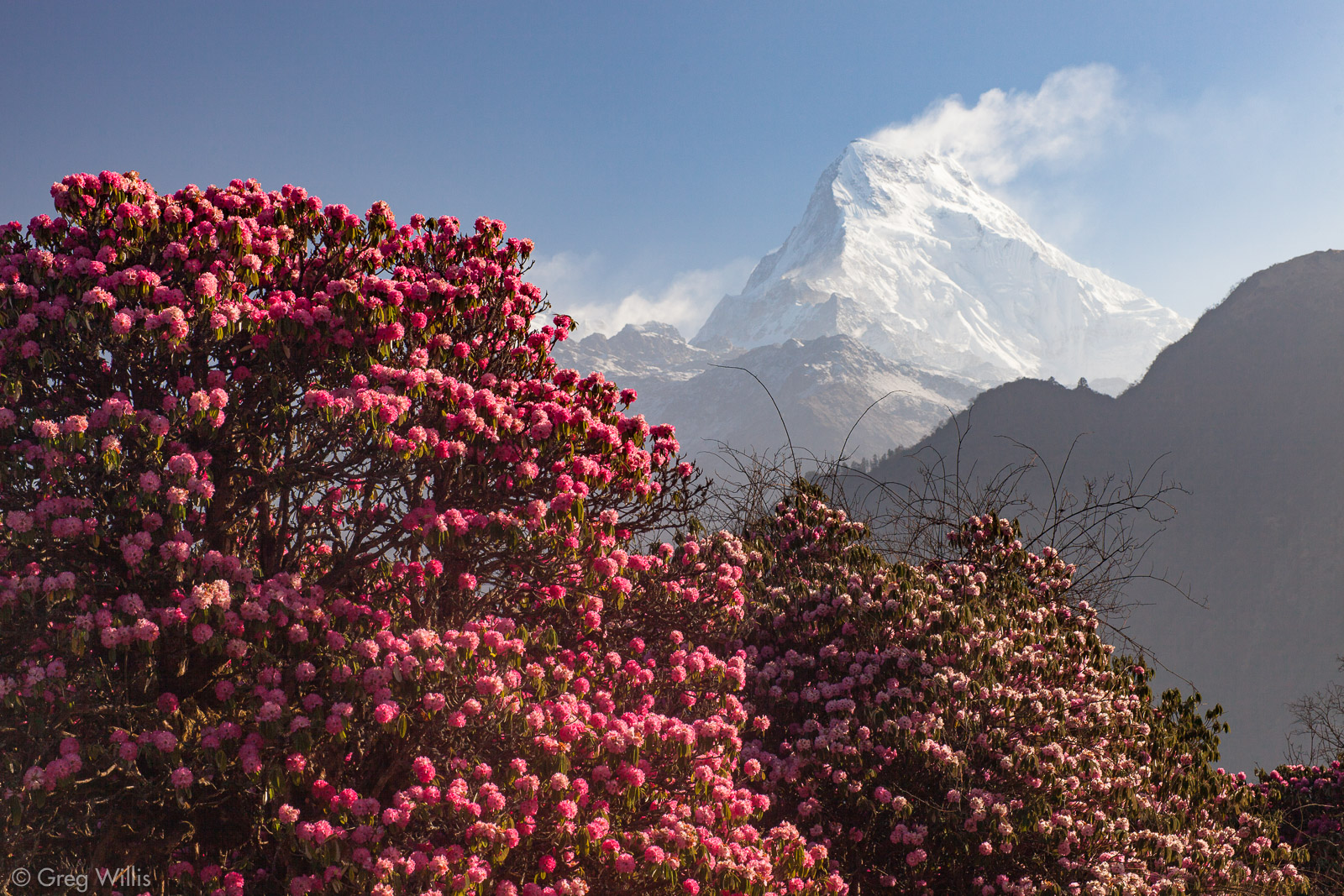

Leave a Reply